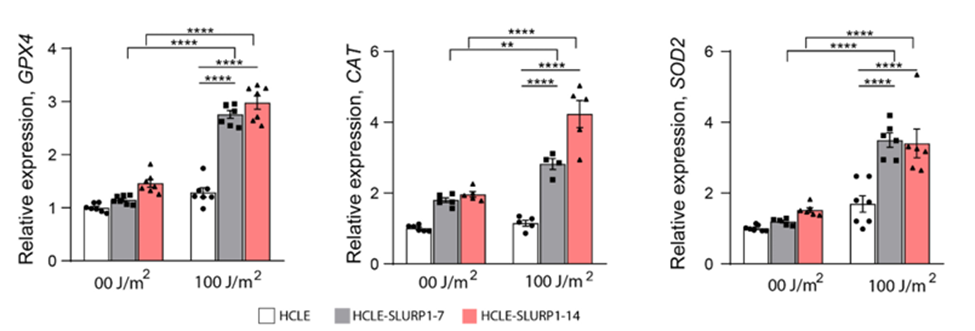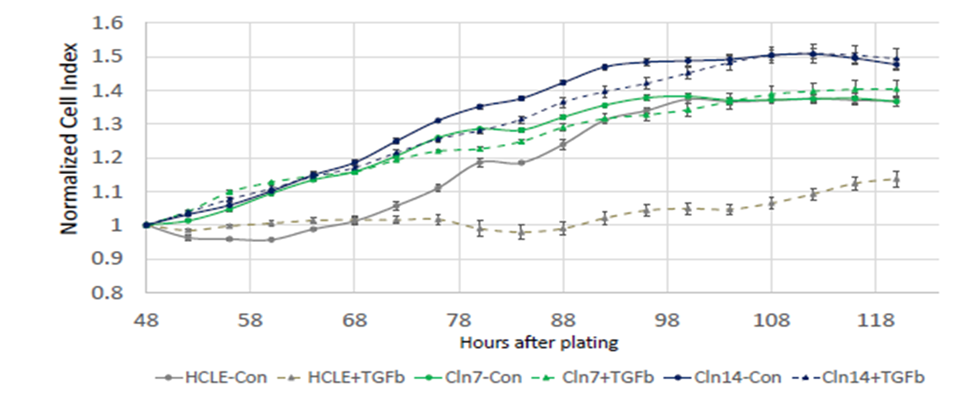Advantages:
- Identification and validation of SLURP1 as a therapeutic target for treating ocular therapies
- SLURP1 enhances antioxidant defenses
- SLURP1 counteracts TGF-β-induced EMT in corneal epithelial cells
- Potential for Formulating eye care products with SLURP1 to mitigate oxidative stress and maintain corneal epithelial homeostasis (e.g. recombinant SLURP1 eye drops)
Summary:
Ocular surface inflammatory disorders pose significant therapeutic challenges due to their multifaceted pathogenesis involving oxidative stress, angiogenic inflammation, and epithelial-mesenchymal transition (EMT). The continual exposure of the cornea to reactive oxygen species (ROS) from the environment can induce oxidative stress-related damage of cellular components such as pro-inflammatory signaling and angiogenesis, all of which exacerbate inflammation and impair corneal transparency. TGF-β-induced EMT contributes to the loss of epithelial integrity and barrier function, further complicating disease management. Current treatments do not fully address these underlying molecular mechanisms, highlighting the need for novel therapeutic approaches to improve clinical outcomes in these debilitating eye conditions.
This invention uncovers the potential role of Secreted Ly6/uPAR-related protein-1 (SLURP1) in treating ocular surface inflammatory disorders such as dry eye disease and HSV-1 keratitis. Research demonstrated that SLURP1 expression in human corneal limbal epithelial (HCLE) cells suppressed ROS production in response to various oxidative stressors. This antioxidant defense was regulated by enzymes like glutathione peroxidase 4, catalase, and superoxide dismutase 2, maintaining redox homeostasis, and reducing oxidative damage in corneal epithelial cells. SLURP1 also counteracts TGF-β-induced epithelial-mesenchymal transition (EMT), preserving epithelial barrier function. By comparing the corneal transcriptomes of wild-type (WT) mice and SLURP1-null (Slurp1X-/-) mice, researchers identified activation of angiogenic inflammation regulators such as TGF-β1, NFκB, and IκBKB in the absence of SLURP1. Overexpressing SLURP1 in HCLE cells exhibited a reduced increase in EMT markers like N-cadherin and vimentin when treated with TGF-β. These novel findings highlight SLURP1's protective roles and demonstrate the SLURP1 as a novel therapeutic target.
Figure 1: SLURP1 promotes antioxidant gene expression.

Figure 2: SLUPR1protects CE cells from TGF-β induced barrier disruption

Increased expression of antioxidant genes GPX4, CAT and SOD2 in HCLE-SLURP1 compared with the HCLE cells after 6h of 100 J/m2 UV-B exposure (n≥4)
Desired Partnerships:
- License
- Sponsored Research
- Co-Development